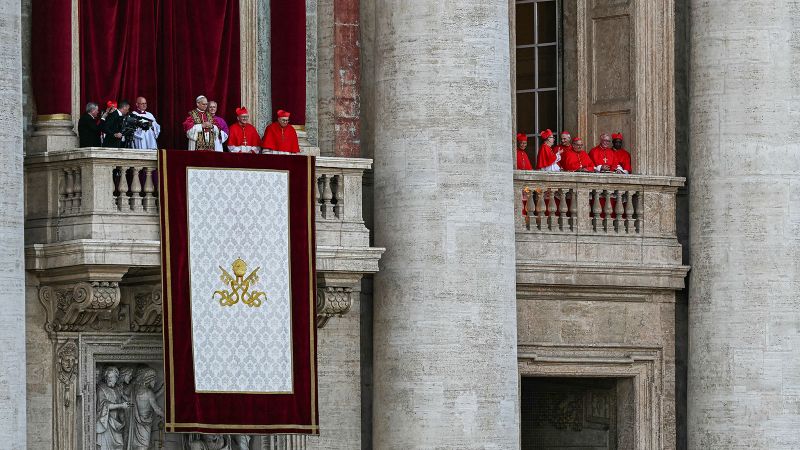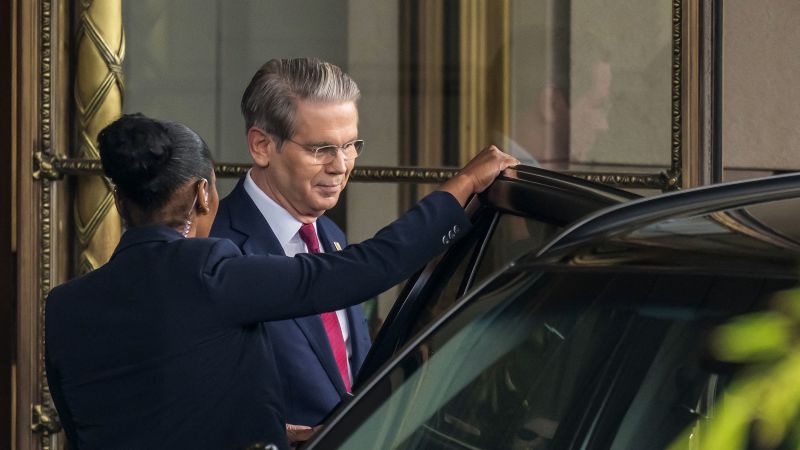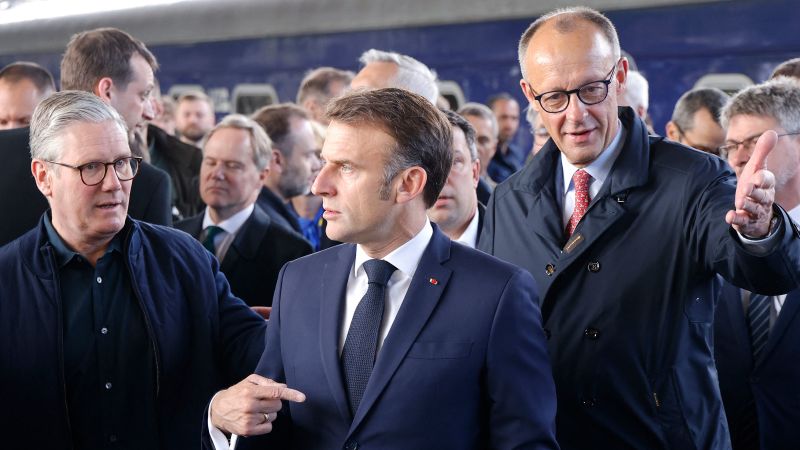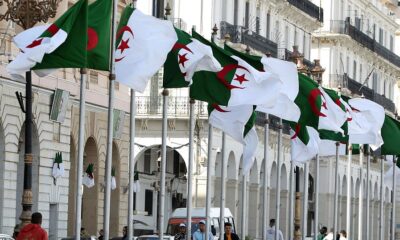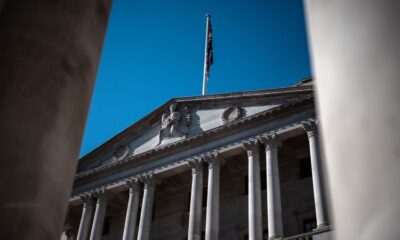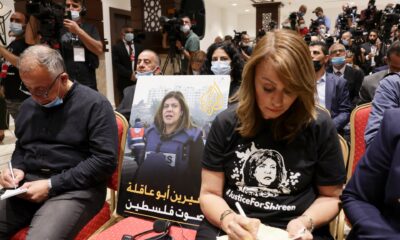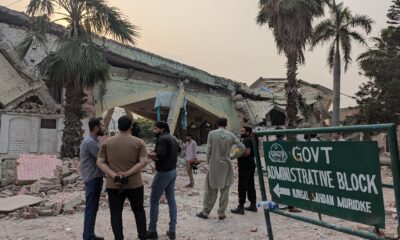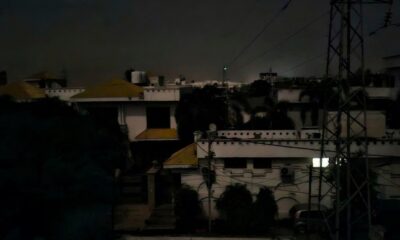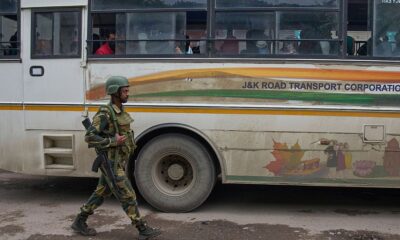The world watched in rapt anticipation on Thursday as newly appointed Pope Leo XIV stepped up to the velvet-draped ledge of the St. Peter’s Basilica balcony, raising his hand to greet a sea of Catholics who believe he had been appointed by the grace of God.
But back in Villanova, Pennsylvania, Rev. Robert Hagan recognized the face of his old friend, Bob Prevost.
“When he emerged from the balcony, we were all just overjoyed. It was like somebody from your family standing up there,” said Hagan, who has known Prevost for 25 years. “We’re proud of him, but also grateful and really understanding that he is a humble, unassuming man who was asked to do this, ultimately, by God.”
Prevost, the 69-year-old Chicago native and Peruvian cardinal, is the new leader of the world’s 1.4 billion Catholics – the first US-born pope in history who is now stepping onto the international stage to confront tough decisions on the church and on political issues with ramifications well beyond its walls. How he chooses to tackle critical topics from same-sex marriage to women in the church remains to be seen, but those who know him say he’ll likely continue his predecessor’s path in his own image.
His public statements, voting records in Illinois and posts made on an X account under his name also paint a clearer picture of the man beneath the robes and the ideologies that will inform how he leans the church forward.
Though Prevost spent much of his life outside the United States – particularly in Peru, where he also holds a passport – his selection nonetheless upended the longstanding belief that the church would not add the papacy to the United States’ already enormous global influence.
That break from conventional wisdom was made possible by a “crisis of international order,” Dr. Massimo Faggioli, professor of theology and religious studies at Villanova University, the new pope’s alma mater, told CNN’s Jake Tapper on “The Lead.” The Catholic church, he said, is “reading the global map and in responding in a very creative way.”
While he was seen as a moderate choice as pope, some of his positions – particularly on migrants – could put Leo XIV’s Rome at odds with President Donald Trump’s Washington, at times of turbulence in both the church and the nation.
“If President Trump and Vice President Vance wanted an American pope, Robert Prevost is not the one they wanted,” Faggioli said.

Prevost is American, but inside the Vatican, he was widely seen as the “least American” of the cardinals from the United States. He worked for a decade in Trujillo, Peru, and was later appointed bishop of Chiclayo, another Peruvian city, where he served from 2014 to 2023. He then moved to the Vatican, where he led a powerful office for bishop appointments.
Trump and Vice President JD Vance both congratulated the new pope on Thursday. But his stances on a number of issues – a list that includes climate change, immigration and the war in Ukraine – raise the possibility of friction between a White House bent on shrinking the United States’ obligations on the global stage and a pontiff calling for “a united church, always seeking peace and justice.”
For the last decade, a social media feed in the name of Robert Prevost reposted articles and posts critical of Vance and Trump’s anti-immigration positions.
The X account listed under Prevost’s name did not appear to personally write any of the critical posts, but reposted articles and headlines from others. CNN has reached out to the Vatican, X and friends of Prevost, but has not been able to independently confirm the X account is connected to the newly elected pope.
The posts took aim at past comments from Vance accusing the far left of caring more for migrants than American citizens, and the account shared an article about the Trump administration’s wrongful deportation of Kilmar Abrego Garcia, an undocumented immigrant who was residing in Maryland before he was sent to a Salvadoran prison. In the piece, a bishop writes: “Is your conscience not disturbed? How can you stay quiet?”
The X account in 2020 also shared a post offering prayers for George Floyd, the Minnesota man whose police killing triggered nationwide protests, and his family. The account also shared a post describing protests as “helpful” and saying protesting “shows we demand change,” while at the same time cautioning against “violence and physical altercations.”
That feed has also shared a statement in which Cardinal Blase Cupich, the archbishop of Chicago, called Trump’s 2017 move to ban refugees “a dark moment in U.S. history.”
“He sees the United States headed in the wrong direction in terms of immigration,” John Prevost, Pope Leo’s brother, told CNN affiliate WBBM.
Father Mark Francis – a friend of Pope Leo who attended the same seminary in the 1970s – said the new pope is a “prudent person” who will weigh in on political matters when appropriate, but “he’s not a political activist.”
Pope Leo’s speech Thursday, he said, might be an example of that. “He emphasized bridge-building. In a certain sense, that is a way of subtly criticizing President Trump’s emphasis on building walls,” he said. “This is something that Pope Francis emphasized as well.”
Voting records show that Prevost is registered to vote in the Chicago suburb of New Lenox and has regularly cast ballots there. He voted in the general election in 2024, 2018, 2014, and 2012, according to records provided to CNN by the Will County Clerk’s office.
Prevost voted in the Republican primary in 2016, 2014 and 2012, the records show. The county’s records only date back to 2012. However, two sources with access to political parties’ more sophisticated voter databases said those reflected that Prevost voted in the 2008 and 2010 Democratic primaries.

Pope Leo will likely be a “mirror image” of Francis – a different man but a continuation of his predecessor’s focus on serving the poor, missionary work and encouraging dialogue within the church, said John Lydon, an Augustinian friar who lived and worked with Prevost in Peru in the 1990s.
Prevost appeared Thursday wearing a bright red shoulder cover and an ornate stole – in keeping with Catholic tradition but departing from the simplistic white that Francis wore onto the same balcony 12 years earlier.
“He was a great pastor in Peru, a great person that went out to the people,” Lydon said. “People really loved him, because he treated the poor with great dignity.”
Prevost likely chose the name Leo to continue the tradition of Pope Leo XIII, “the man who truly began Catholic social thought in the modern period,” said Rev. Art Purcaro, who has worked with Prevost for more than two decades in Peru and Rome and is now assistant vice president of mission and ministry at Villanova University. He said Leo XIII proclaimed the dignity of the worker and the importance of social organizing for a common good, both values Prevost “believed and lived and promoted.”
Prevost’s missionary experience in Peru, where he ventured into village communities to serve impoverished populations, will fundamentally inform how he leads the church, Lydon said.
Purcaro said he believes Pope Leo will live humbly as Francis did, shirking the pomp and grandeur that sometimes accompany the position.
“It would be natural for Pope Leo, as (he did as) Bob Prevost, to live humbly, simply, genuinely, authentically,” Purcaro said.
He will also likely carry on his predecessor’s mission of calling for peace, his friends say.
In a 2023 interview with a Peruvian news outlet, Prevost was critical of Russia’s invasion of Ukraine, saying that “there are crimes against humanity that are being committed in Ukraine.”
His comments came as some Republicans pushed to curb the United States’ support for Ukraine in its war effort.
“We must pray a lot to God for peace, but I believe that we must also be clearer ourselves, even some politicians in our country do not want to acknowledge the horrors of this war and the evil that Russia is carrying out in all its actions there in Ukraine,” he said in Spanish. “It is a situation that cries out to the heavens, that is seeking a solution.”
Climate change will likely be another one of Pope Leo’s top priorities, continuing Francis’ vocal calls for environmental preservation, those close to him said.
“Leo XIV will continue to encourage all of us to be aware of and to do what we can to make this a better world for everybody, which means caring for the things that we have and have been given to us and for us, been given to us to share,” said Purcaro.
Lydon said the new pontiff is “very conscious of the of the environment and the damage to the environment and the need to change our economic models to take better care of what Pope Francis called ‘our common home.’”

Standing steadfast on women, LGBTQ issues
Some Catholics have shared hopes that Pope Leo will adopt the more take progressive stances of his predecessor on women in the clergy and LGBTQ people, but Prevost’s past statements suggest he may adhere more closely to traditional Catholic doctrine.
Sister Barbara Reid, the president of the Catholic Theological Union in Chicago, expressed optimism that Pope Leo will continue Pope Francis’s efforts to include women in ordained ministries and to encourage more acceptance of LGBTQ people in the church.
“I was so delighted, as many of us were, when Pope Francis famously said, ‘Who am I to judge?’ and it opened a door for acceptance,” she said. “I think Pope Francis was so clear that everybody belongs, everybody needs to have full respect and dignity, everybody needs to know they are welcome as they are in the church, and I am quite confident that our new pope will share that perspective and help us take the next steps forward.”
But in 2023, while leading the Vatican bishops’ office, Prevost said at a Vatican news conference that the church had increasingly given women high-ranking jobs in the Vatican – but there was no changing the tradition that confers priestly ordination only on men.
“It’s not a given just because in society … a woman can be president, or women can have many different kinds of roles of leadership in the world,” he said, according to The Associated Press. “It’s not like there’s an immediate parallel to say ‘In the church, therefore.’”
Prevost’s public comments on LGBTQ people have been scant but suggest he may take a more restrained stance than Francis, who never condoned same-sex marriage in the church but encouraged congregations to treat LGBTQ people with compassion.
In a 2012 address to bishops, Prevost expressed concern that Western media promotes “sympathy for beliefs and practices that contradict the gospel,” including the “homosexual lifestyle” and “alternative families made up of same-sex partners and their adopted children,” the New York Times reported.
Lydon emphasized that Prevost’s thinking on such issues could adapt over time but emphasized that as pope, Prevost must now contend with the beliefs of more than a billion Catholics spread across the globe.
“We have to understand he’s now the pope … of the universal church. He has to listen to all the voices, the voices of Asia, Africa, Latin America, Europe and North America. And a lot of those voices have different perspectives on some of the social issues,” Lydon said.
Prevost indicated as much last year in a discussion of the Fiducia Supplicans, a 2023 Vatican declaration which allows for blessings of same-sex couples. Prevost argued that bishops should have the authority to consider the cultural contexts of their diocese, pointing out that some global communities have a vastly different “cultural reality.”
“You have to remember there are still places in Africa that apply the death penalty, for example, for people who are living in a homosexual relationship. … So, we’re in very different worlds,” Prevost said in October.

In grade school, Prevost was known as “Bobby,” a quiet but popular student who made straight-A’s.
“He was just really always a good guy and everybody knew he was going to be a priest. It was just set in stone,” said Tim Scanlon, who attended grades 1-8 with Prevost at St. Mary of the Assumption in the Chicago area from 1961 to 1969.
In later years, his former classmates casually but respectfully referred to him as “Father Bobby” as they tracked his career, said Scanlon, 69.
Scanlon said Prevost has a “giving soul” and will be a “unifier” as pope.
“I think Father Bobby will be a bridge,” said Scanlon. “He’ll unite the Catholic people, which I think is needed.”
Father Francis, who’s now Provincial of the Viatorians in the US, said Pope Leo’s roots in the Midwest played a large role in shaping him as a religious leader. Francis describes Pope Leo as serious, focused and dependable, with a good sense of humor. “He’s not a showboat kind of person,” he said.
“Bob,” as Francis has called him for the past several decades, never mentioned wanting to become pope, he said, or any of the leadership positions he went on to assume. “He is a calm person who is not a careerist, is not just seeking a promotion – but someone who’s there to serve.”
Several friends close to Prevost believe he will continue Francis’ philosophy of “synodality,” which advocated for a church that “journeys together” instead of the traditional image of a church that is led from the top. The late pope encouraged local diocese to open up dialogues with their parishes – including those who had left or felt excluded by the church – in an effort to unite church leaders and everyday parishioners.
“He’s going to promote a church of dialog with people with different perspectives and different traditions, trying to build bridges, rather than to build walls,” Lydon said.

